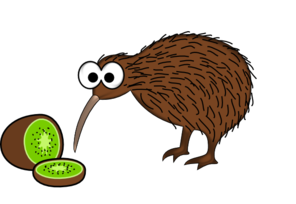The internet over the course of nearly three decades has become more integrated into our lives than ever before with more than 3.2 billion people around the world now using the internet (Davidson, 2015). It can help people communicate with others easily and information is able to travel around the world almost instantaneously. Web 1.0 signifies the first stage of the internet, when the vast majority of the internet was ‘read-only’ and had limited interaction with its users (Flat World Business, 2016). The term Web 2.0 was coined by Darcy DiNucci in 1999 and describes the changes and implications from a static internet to a more interactive and user focused world wide web (DiNucci, 1999). The internet was slowly assimilating into people’s lifestyle as people were able to not only read but write and communicate ideas and information with others. Websites such as Twitter, YouTube and Facebook are examples of this transition to a more user-interactive web experience. Over the course of several years, marketers have developed different internet strategies that specifically cater to Web 2.0. This blog post will examine these strategies and predict how they will change as Web 2.0 progresses to Web 4.0 in the near future.
According to Choudhury (2014, p. 8096) Web 1.0 lasted from 1989 to 2005. Web 2.0 shifted the locus of power away from traditional companies into the hands of the consumer (Berthon et al. 2012). Social media became increasingly popular as interaction between internet users was and still is encouraged. Marketing strategies that traditionally worked on a static web such as basic advertising banners on websites no longer had the impact that they had before. Thus, marketers shifted their focus onto the consumer by allowing the consumers to advertise to themselves. For instance, marketers contact people that are popular social media to advertise their product for them; similar to how a friend would recommend a product. This meant that products are being marketed in a subtler nature as Web 2.0 developed.

Perhaps the most significant marketing strategy invented in Web 2.0 is target marketing, either through their interests or behaviour. Interest marketing is understanding people’s interests, activities and skills through the information they provide and subsequently market certain products towards them. For instance, if someone ‘likes’ a volunteering page on Facebook, Facebook can target ads that relate to volunteering and charity towards them. Behavioural marketing focuses on understanding a person through their purchase or browsing history. A relevant example is when a person searches for a BMW in Google, ads on the next website they visit will display ads for a variety of different car brands. In Web 2.0, internet marketing has become more specialised to the individual as marketers become smarter in the way they try to reach their target audience. With the additional information that comes from people willingly sharing their personal data on social media, marketers are able to take advantage and concentrate more efficiently on their target market.
The transition into the Web 3.0 age, also known as the semantic web, arguably has begun with the ‘Internet of Things.’ It refers to the foreseeable future where everyday objects are intertwined and connected to the internet (Xia et al. 2012). The internet will be more effective in the discovery, automation, integration and recycling of information across various applications and devices (Aghaei, Nematbakhsh & Farsani 2012, p. 7). Marketers will have to their disposal a wider range of information that will allow them to further target their products more individually. Although Web 3.0 will connect significantly more information together than ever before and advertisements will be targeted more and more to the individual. If someone recently watched on their television a game between the the LA Lakers and Chicago Bulls, this will intuitively show information regarding that game or those teams.
 The evolution of the web to 4.0 is one that experts are in disagreement with; after all, something in the future is hard to predict correctly. It is where humans and the internet cannot be detached from one another as it will pervade our everyday lives as artificial intelligence is slowly realised (Aghaei, Nematbakhsh & Farsani 2012, p. 8). Web 4.0 will be an intelligent web and experts have predicted that it may be in the form of an “ultra intelligent electronic agent” that will advise individuals through processing information on the internet and matching it uniquely to an individual’s circumstances. How this translates to marketing is uncertain. What is certain though, is that marketing strategies will evolve with the transition to Web 4.0. This may mean that the marketing itself is automated by machines and will not require human touch as machines are will be able to process significantly larger amounts of data to formulate the best marketing strategy for a certain product through analysing past strategies. Furthermore, products may be marketed to an individual automatically and intuitively. An example would be when a light bulb in your home breaks, your smartphone will notify you and give you several brands to choose from. The process of paying, processing and delivery will all be automated. Companies may need to pay in order for their products to be displayed closer to the top.
The evolution of the web to 4.0 is one that experts are in disagreement with; after all, something in the future is hard to predict correctly. It is where humans and the internet cannot be detached from one another as it will pervade our everyday lives as artificial intelligence is slowly realised (Aghaei, Nematbakhsh & Farsani 2012, p. 8). Web 4.0 will be an intelligent web and experts have predicted that it may be in the form of an “ultra intelligent electronic agent” that will advise individuals through processing information on the internet and matching it uniquely to an individual’s circumstances. How this translates to marketing is uncertain. What is certain though, is that marketing strategies will evolve with the transition to Web 4.0. This may mean that the marketing itself is automated by machines and will not require human touch as machines are will be able to process significantly larger amounts of data to formulate the best marketing strategy for a certain product through analysing past strategies. Furthermore, products may be marketed to an individual automatically and intuitively. An example would be when a light bulb in your home breaks, your smartphone will notify you and give you several brands to choose from. The process of paying, processing and delivery will all be automated. Companies may need to pay in order for their products to be displayed closer to the top.
Ultimately, the transition from 2.0 to 3.0 is already starting to happen with inventions such as Siri on the iPhone and smart televisions. What the implications on marketing is uncertain and we can only speculate. However, we know that the internet will be more individual focused and likewise internet marketing may transition from target marketing to what I would call “individual marketing”.
References:
Aghaei, S, Nematbakhsh, MA & Farsani, HK 2012, ‘Evolution of The World Wide Web: From Web 1.0 to Web 4.0’, International Journal of Web & Semantic Technology, vol. 3, no. 1, pp. 1-10, viewed 14 August 2016, <http://airccse.org/journal/ijwest/papers/3112ijwest01.pdf>
Berthon, PR, Pitt, LF, Plangger K & Shapiro, D 2012, ‘Marketing meets Web 2.0, social media, and creative consumers: Implications for international marketing strategy’, Business Horizons, vol. 55, no. 3, pp. 261-271, viewed 14 August 2016, <http://www.sciencedirect.com/science/article/pii/S0007681312000080>
Choudhury, N 2014, ‘World Wide Wed and Its Journey from Web 1.0 to Web 4.0’, International Journal of Computer Science and Information Technologies, vol. 5, no. 6, pp. 8096-8100, viewed 13 August 2016, <http://www.ijcsit.com/docs/Volume%205/vol5issue06/ijcsit20140506265.pdf>
Davidson, J 2015, ‘Here’s How Many Internet Users There Are’, Time, 26 May, viewed 15 August 2016, <http://time.com/money/3896219/internet-users-worldwide>
DiNucci, D 1999, ‘Fragmented Future’, Design & New Media, pp. 220-222, viewed 16 August 2016, <http://darcyd.com/fragmented_future.pdf>
Flat World Business, Web 1.0 vs Wed 2.0 vs Web 3.0 vs Web 4.0 vs Web 5.0 – A bird’s eye on the evolution and definition, Flat World Business, viewed 15 August 2016, <https://flatworldbusiness.wordpress.com/flat-education/previously/web-1-0-vs-web-2-0-vs-web-3-0-a-bird-eye-on-the-definition>
Fowler, J & Rodd, E 2015, ‘Web 4.0: The Ultra-Intelligent Electronic Agent is Coming’, Big Think, viewed 19 August 2016, <http://bigthink.com/big-think-tv/web-40-the-ultra-intelligent-electronic-agent-is-coming>
Xia, F, Yang, LT, Wang, L & Vinel, A 2012, ‘Internet of Things’, International Journal of Communication Systems, vol. 25, no. 9, pp. 1101-1102.

awesome !
LikeLiked by 1 person
Thanks Bao 🙂
LikeLike
Great job mate
LikeLiked by 1 person
Thanks Dakai 🙂
LikeLike
so cool
LikeLiked by 1 person
Thanks Samfai 🙂
LikeLike
why r u so cool
LikeLiked by 1 person
hahaha 🙂
LikeLike
Wow! good!
LikeLiked by 1 person
Thank you 🙂
LikeLike
Interesting topic! And you have used a lot of references to support your argument! I’m really enjoy when I reading this blog!!
LikeLiked by 1 person
Thanks Alina 🙂 great to hear!
LikeLike
good work 🙂
LikeLiked by 1 person
Thanks Samar 🙂
LikeLike
Good analysis about the Web2.0 to Web 4.0
LikeLiked by 1 person
Thank you!
LikeLike